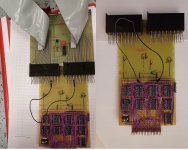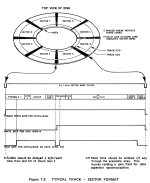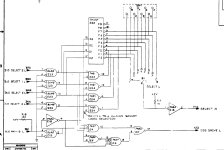PDP11GY
Experienced Member
I am currently trying to develop a RK05 disk emulator. It is an addition to my
existing projects, the RL01/RL02 and MFM disk emulator, and will be also based
on the DE10-Nano FPGA board. The firmware and the associated C program is almost
ready. Everything is based on Quartus version 22.1. However, I have problems
with the interface hardware, see picture attached. I'm missing some information
and I currently do not have access to a working RK05 disk drive.
-I can't find any information about the pinout assignment of the RK05 backplane.
A description of the RK05 interface cable is available in the RK8-L manual,
but only of the P1 and P2 connectors and not of the RK05 backplane.
-In the PDP-11 area there is no documentation about the sector/header format,
at least I can't find any.
General notes:
Of course it is also an open source project and I can also publish the existing
beta version on GitHub and on my homepage if required.
I am planning(!) a new PCB concept with a friend. It should consist of 2 parts.
Part 1: A general level converter from/to the FPGA world. In the beta version,
I used the https://www.sparkfun.com/products/12009 , see picture attached.
Part 2: Individual design for the RL02/MFM/RX and RK05 emulator interface which is
plugged on the level converter interface.
Another problem is the availability of the edge connectors.
Maybe it's too wasteful (for me) to develop a new PCB board. Anyway, I will try
to finish the prototype like in the picture and I will try to finish the
prototype like in the picture. Another idea: We could then send this prototype
around and everyone can save their RK05 cartridges.
My view: it should also be our joint design
In the TTL world I use the chip 74LS07, open collector and a resistor network
for the input signals. This is correct for emulator mode, but if the interface
board should also to be used as a reader only, things are different, like in my
MFM or RL02 emulator.
Help from you is necessary and every hint is also very welcome.
Reinhard
existing projects, the RL01/RL02 and MFM disk emulator, and will be also based
on the DE10-Nano FPGA board. The firmware and the associated C program is almost
ready. Everything is based on Quartus version 22.1. However, I have problems
with the interface hardware, see picture attached. I'm missing some information
and I currently do not have access to a working RK05 disk drive.
-I can't find any information about the pinout assignment of the RK05 backplane.
A description of the RK05 interface cable is available in the RK8-L manual,
but only of the P1 and P2 connectors and not of the RK05 backplane.
-In the PDP-11 area there is no documentation about the sector/header format,
at least I can't find any.
General notes:
Of course it is also an open source project and I can also publish the existing
beta version on GitHub and on my homepage if required.
I am planning(!) a new PCB concept with a friend. It should consist of 2 parts.
Part 1: A general level converter from/to the FPGA world. In the beta version,
I used the https://www.sparkfun.com/products/12009 , see picture attached.
Part 2: Individual design for the RL02/MFM/RX and RK05 emulator interface which is
plugged on the level converter interface.
Another problem is the availability of the edge connectors.
Maybe it's too wasteful (for me) to develop a new PCB board. Anyway, I will try
to finish the prototype like in the picture and I will try to finish the
prototype like in the picture. Another idea: We could then send this prototype
around and everyone can save their RK05 cartridges.
My view: it should also be our joint design
In the TTL world I use the chip 74LS07, open collector and a resistor network
for the input signals. This is correct for emulator mode, but if the interface
board should also to be used as a reader only, things are different, like in my
MFM or RL02 emulator.
Help from you is necessary and every hint is also very welcome.
Reinhard





